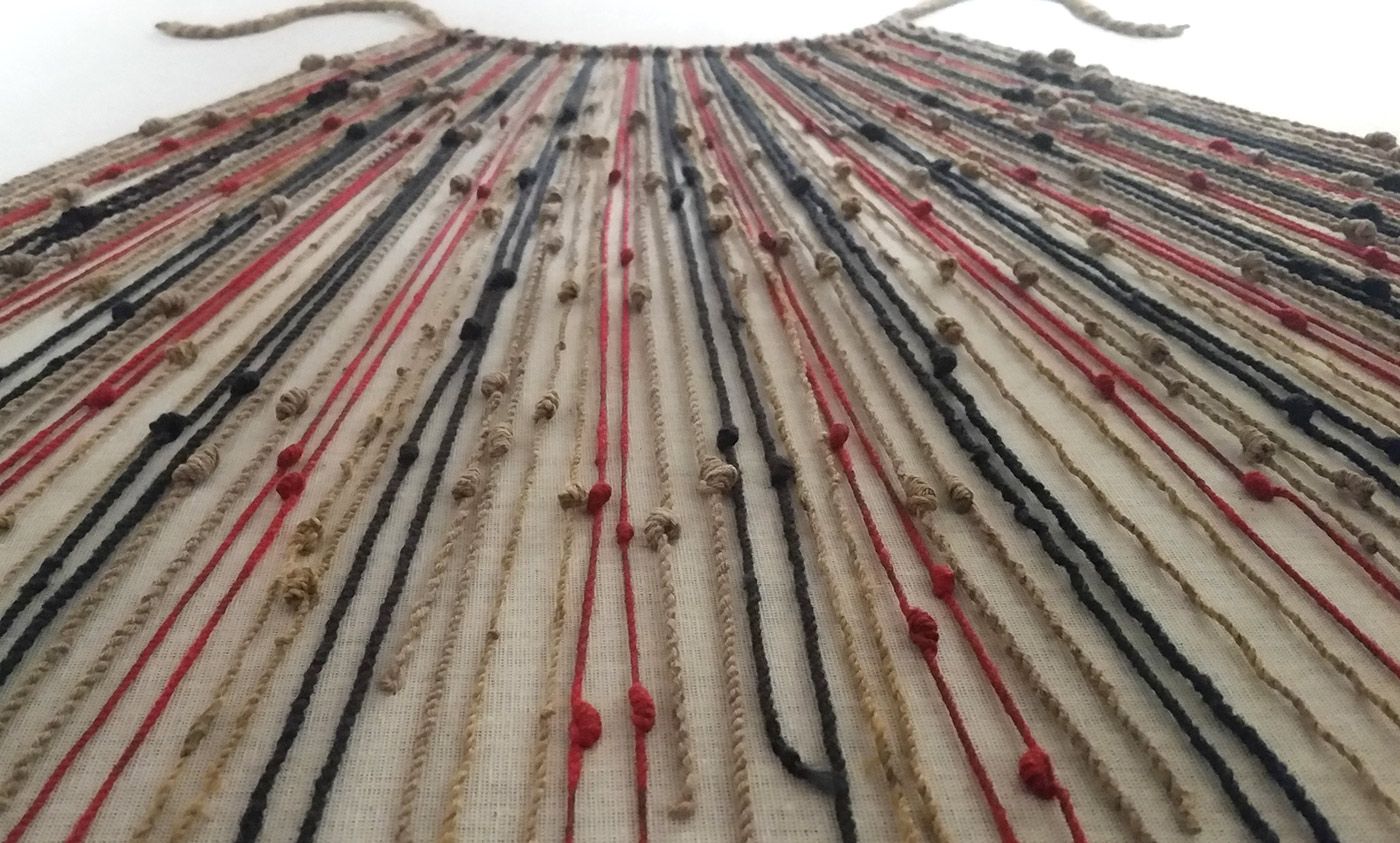by MANUEL MEDRANO & GARY URTON
 Khipu in the Museo Machu Picchu, Casa Concha, Cusco. PHOTO/Wikipedia
Khipu in the Museo Machu Picchu, Casa Concha, Cusco. PHOTO/Wikipedia
The Inka Empire (1400-1532 CE) is one of few ancient civilisations that speaks to us in multiple dimensions. Instead of words or pictograms, the Inkas used khipus – knotted string devices – to communicate extraordinarily complex mathematical and narrative information. But, after more than a century of study, we remain unable to fully crack the code of the khipus. The challenge rests not in a lack of artifacts – over 1,000 khipus are known to us today – but in their variety and complexity. We confront tens of thousands of knots tied by different people, for different purposes and in different regions of the empire. Cracking the code amounts to finding a pattern in history’s knotted haystack.
Using locally available materials such as camelid fleece and cotton, the khipukamayuqs (Quechua for ‘knot-makers/animators’) encoded administrative data such as census figures and tax allocation in the twisted strings of these ancient spreadsheets. The Inka bureaucrats used these data to keep tabs on the largest empire in the pre-Columbian Americas. We have known for about a century that the accounting khipus follow a base-10 knot scheme (imagine an abacus made out of string). However, these quantitative khipus account for only about two-thirds of the samples remaining today. The remaining third of these devices – the so-called narrative khipus – appear to contain encoded non-numerical, narrative information, including names, stories and even ancient philosophies. For those who love puzzles, the narrative khipus are a godsend.
What is so radical about wrapping numbers in knots? Consider how we typically learn to count. In school, counting begins with objects – wooden blocks, Lego pieces or other toys. Addition and subtraction involve making piles of these objects or tallying with our fingers. Then fingers and blocks turn into two-dimensional formulas, as students are taught a series of mathematical figures, commonly called ‘ciphers’. As a result, we can lose our ability to appreciate numbers as being represented by anything other than these abstract written symbols. Think about it: is there anything about the symbol ‘7’ that communicates the meaning of seven? By contrast, the Inka khipu code for seven was a special type of knot, made by wrapping the string around itself to make a series of loops – seven, to be exact.
Aeon for more
